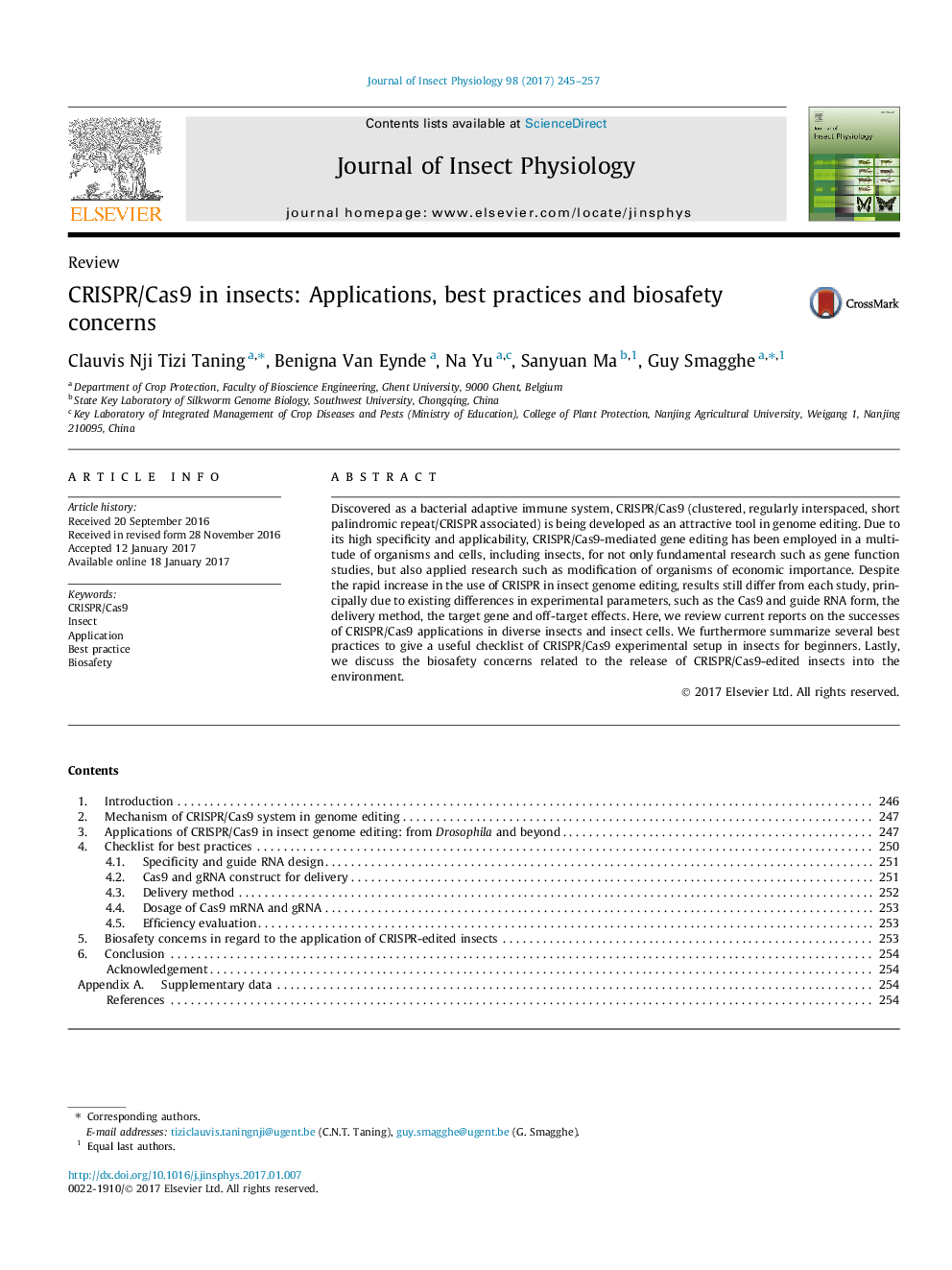| Article ID | Journal | Published Year | Pages | File Type |
|---|---|---|---|---|
| 5593183 | Journal of Insect Physiology | 2017 | 13 Pages |
â¢Current reports on CRISPR/Cas9 applications in diverse insects and insect cells.â¢A summary of best practices for a successful CRISPR/Cas9 experiment in insects.â¢Biosafety concerns related to the release of CRISPR/Cas9-edited insects.
Discovered as a bacterial adaptive immune system, CRISPR/Cas9 (clustered, regularly interspaced, short palindromic repeat/CRISPR associated) is being developed as an attractive tool in genome editing. Due to its high specificity and applicability, CRISPR/Cas9-mediated gene editing has been employed in a multitude of organisms and cells, including insects, for not only fundamental research such as gene function studies, but also applied research such as modification of organisms of economic importance. Despite the rapid increase in the use of CRISPR in insect genome editing, results still differ from each study, principally due to existing differences in experimental parameters, such as the Cas9 and guide RNA form, the delivery method, the target gene and off-target effects. Here, we review current reports on the successes of CRISPR/Cas9 applications in diverse insects and insect cells. We furthermore summarize several best practices to give a useful checklist of CRISPR/Cas9 experimental setup in insects for beginners. Lastly, we discuss the biosafety concerns related to the release of CRISPR/Cas9-edited insects into the environment.
Graphical abstractDownload high-res image (47KB)Download full-size image
